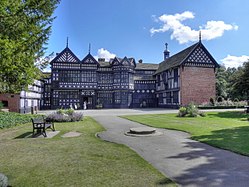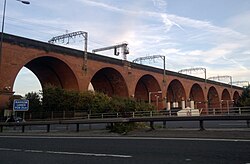Description
The chamber is decorated with elaborate plasterwork, brass chandeliers and decorative carvings on oak benches. [7] The civic collection of silver, some of which dates from the 15th century, lines the wall of the corridor outside the chamber. [7]
An imposing Italian marble entrance leads to the Edwardian Ballroom, which former poet laureate Sir John Betjeman described as "magnificent". [8]
The ballroom has a Wurlitzer Publix One theatre organ with four manuals and 20 ranks of pipes, specified by Jesse Crawford. [9] It was originally installed in the Paramount Cinema on Oxford Road in Manchester in 1930; it had been planned to install one of these in each of the 50 Paramount theatres, however this was the only one to be installed, and the only one of that model to leave the United States. When the theatre was divided, the organ was acquired by the Lancastrian Theatre Organ Trust, loaned to the city of Manchester and relocated to the Free Trade Hall (a process taking four years); and was first used there in September 1977. When the Free Trade Hall closed, it was moved to Stockport Town Hall in 1999. [10] [11]
The town hall, which as the home of Stockport Symphony Orchestra, hosts classical concerts on a regular basis, [12] has been nicknamed "the wedding cake". [4]
This page is based on this
Wikipedia article Text is available under the
CC BY-SA 4.0 license; additional terms may apply.
Images, videos and audio are available under their respective licenses.












